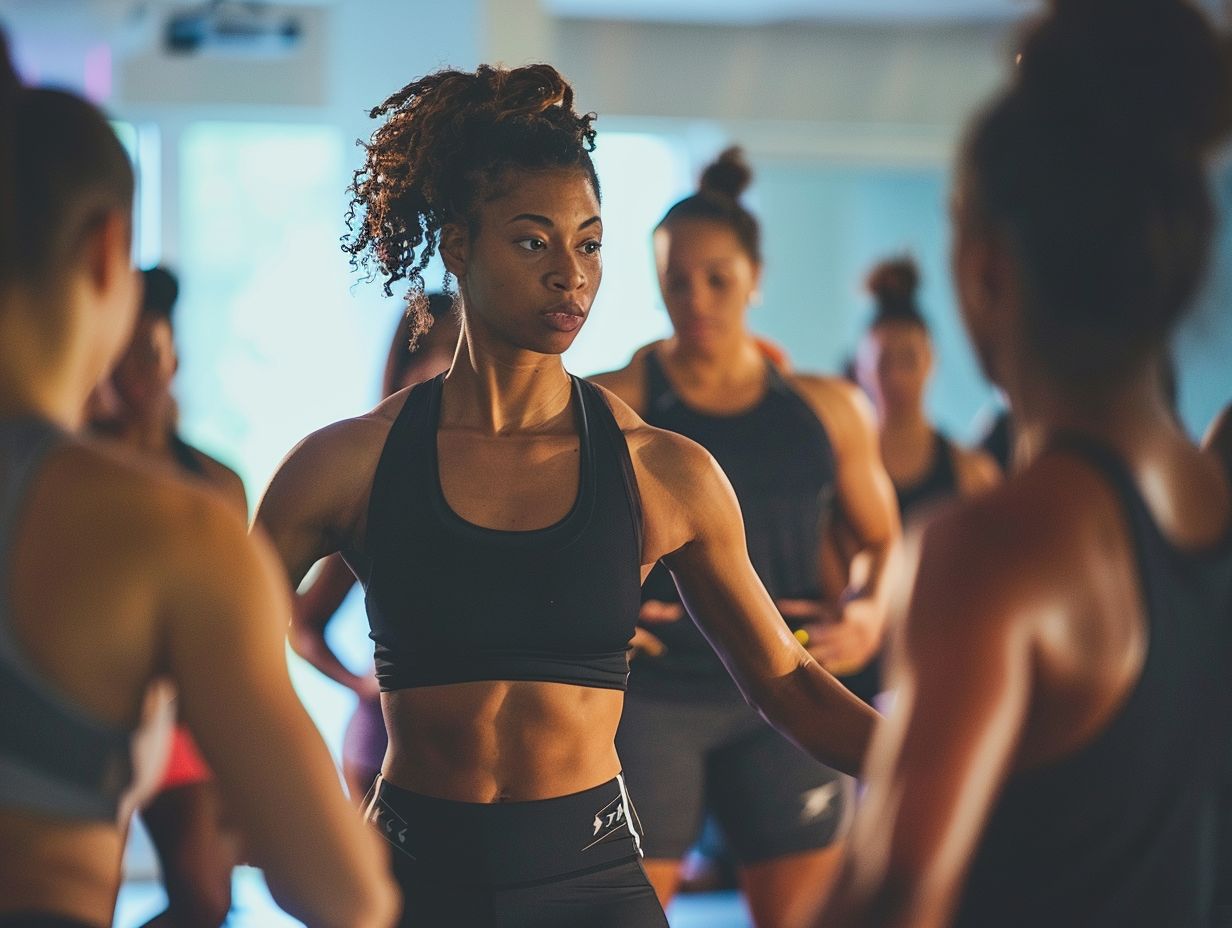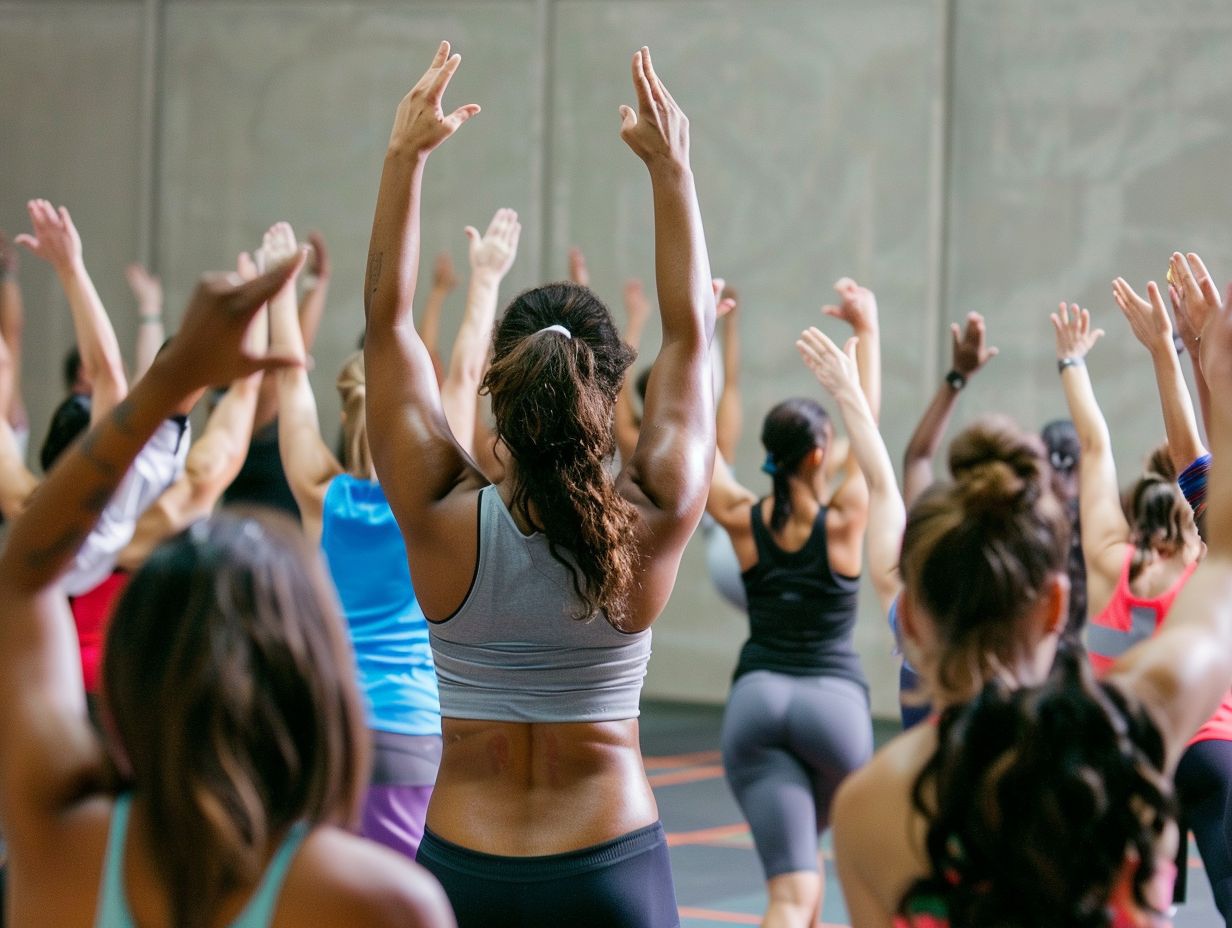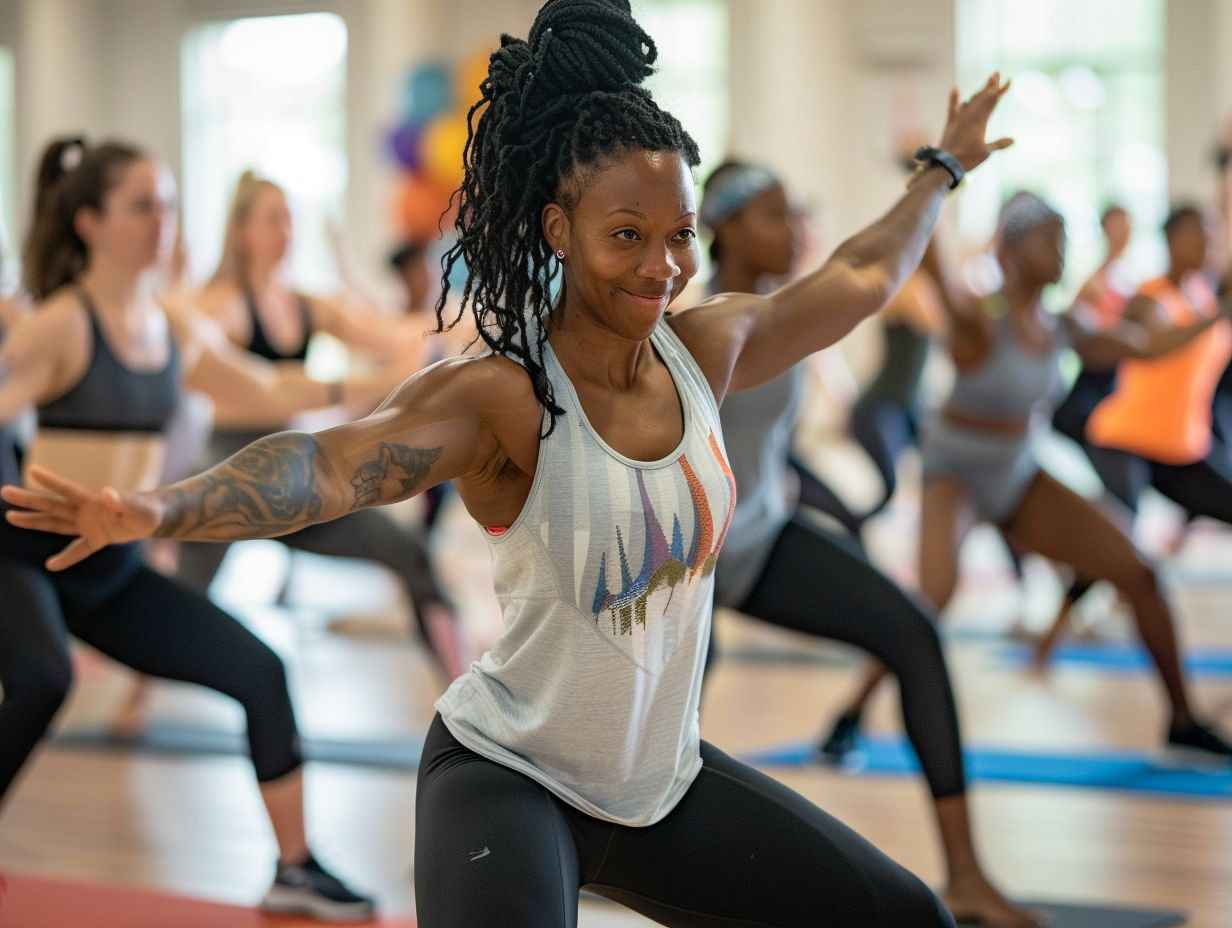Motivation plays a crucial role in achieving fitness goals. For fitness instructors, having a range of techniques to keep clients motivated is essential.
This article delves into the significance of motivational techniques for fitness instructors and how they can be effectively utilized. It discusses positive reinforcement, setting realistic goals, leveraging group dynamics, and infusing fun and variety into workouts.
Practical tips and strategies are provided to help inspire and support clients on their fitness journey. Let’s explore how you can elevate your fitness classes to the next level.
What Are Motivational Techniques for Fitness Instructors?

Motivational techniques play a key role for fitness instructors in guiding and inspiring individuals on their path to wellness. These techniques encompass various strategies designed to promote positive reinforcement, establish achievable goals, and offer consistent support and encouragement to clients.
Fitness instructors contribute significantly to boosting their clients’ morale and determination by providing words of encouragement every step of the way. Effective goal setting enables individuals to maintain focus and motivation by breaking down larger fitness goals into manageable milestones. Establishing a supportive environment within the fitness community encourages camaraderie, accountability, and a sense of belonging, all crucial for sustaining long-term motivation. Additionally, incorporating motivational quotes, success stories, and regular check-ins can further motivate clients to remain dedicated to their fitness journey.
Why Are Motivational Techniques Important for Fitness Instructors?
Motivational techniques are essential in the fitness industry, as they allow instructors to inspire clients to pursue their health and wellness goals with passion and commitment. By employing effective coaching methods and motivational strategies, fitness instructors can establish a supportive atmosphere that encourages clients to surpass their limits and achieve impressive outcomes. Motivation not only drives individuals towards their fitness goals but also nurtures a positive attitude and resilience when faced with obstacles. Customizing motivation techniques to suit each client’s requirements can increase engagement, enhance accountability, and ultimately result in higher client satisfaction and sustained success in their fitness journey.
How to Use Positive Reinforcement as a Motivational Technique?
Positive reinforcement is a powerful motivational tool for fitness instructors looking to inspire desired behaviors and drive meaningful behavior change in clients working towards their fitness goals.
In the realm of fitness coaching, positive reinforcement entails acknowledging and rewarding clients for their progress and efforts in reaching their fitness objectives. By celebrating small milestones and accomplishments, instructors can cultivate a sense of achievement and motivation in their clients, establishing a constructive cycle of reinforcement. This method not only enhances clients’ self-esteem and confidence but also aids in developing enduring habits that contribute to sustained success. By consistently reinforcing positive behaviors, fitness coaches create a supportive atmosphere that encourages individuals to remain dedicated to their fitness journey.
What Are Some Examples of Positive Reinforcement in Fitness Classes?
Positive reinforcement techniques in fitness classes can manifest in various ways, including verbal praise, recognizing progress, setting attainable goals, and offering constructive feedback to inspire participants and facilitate positive changes in behavior.
During workouts, coaches commonly employ specific praise by applauding participants for completing challenging sets or demonstrating correct form. For instance, a coach might express, “Excellent work on those push-ups, really pushing through!” Celebrating progress can entail acknowledging milestones, such as when a participant achieves a personal best in a timed exercise. This acknowledgment enhances confidence and promotes sustained effort. Constructive feedback is another vital tool, allowing coaches to provide personalized guidance on technique enhancements or adjustments for improved outcomes.
How to Set Realistic Goals for Clients as a Motivational Technique?
It is crucial for fitness instructors to utilize the motivational technique of setting realistic goals to assist clients in establishing achievable objectives that are in line with their aspirations. This approach helps to maintain motivation and engagement throughout their fitness journey.
By taking into account client input and considering their unique preferences and capabilities, trainers can create customized goals that resonate with clients on a personal level, enhancing the journey’s significance and rewards. Encouraging gradual progress and acknowledging small milestones can increase client confidence and motivation, reinforcing their dedication to long-term behavior change. Employing specific, measurable, attainable, relevant, and time-bound (SMART) goals offers clients a structured roadmap and a clear sense of direction in their fitness pursuits, fostering a feeling of purpose and accomplishment.
What Are Some Tips for Setting Effective Goals?

Fitness instructors can enhance the likelihood of achieving fitness goals by utilizing effective strategies such as SMART goals (Specific, Measurable, Achievable, Relevant, Time-bound), cultivating a supportive fitness community, and employing personalized coaching techniques customized to each client’s unique needs.
Encouraging clients to articulate specific fitness objectives aids in crafting a well-defined path towards accomplishment. By highlighting the importance of measurability, instructors can monitor progress and make necessary adjustments to ensure goals are achieved.
It is essential for goals to be both realistic and attainable, as this helps maintain clients’ motivation and engagement. Establishing relevance by aligning goals with clients’ aspirations and lifestyle choices enhances commitment. Furthermore, setting time-bound targets creates a sense of urgency and facilitates efficient pacing of efforts towards successful outcomes.
How to Use Group Dynamics as a Motivational Technique?
Utilizing group dynamics can be a highly effective motivational strategy for fitness instructors aiming to cultivate camaraderie, support, and motivation among participants in group exercise settings. This approach creates a synergistic environment that promotes collective goal pursuit and individual growth.
To make the most of this technique, instructors should have a deep understanding of group dynamics. This knowledge allows them to adapt their methods to meet the diverse needs and preferences of the individuals in their classes. Effective leadership is key in guiding group interactions and maintaining a positive atmosphere. Clear communication is vital for delivering instructions, offering feedback, and facilitating teamwork.
By demonstrating genuine enthusiasm and providing encouragement, instructors can foster a sense of belonging and inspire each member to surpass their limits. Successful group motivation strategies often involve establishing collective goals, celebrating achievements together, and nurturing a supportive environment where all participants feel valued and respected.
What Are Some Ways to Encourage Group Support and Motivation?
Fitness instructors have the ability to promote group support and motivation within the fitness community by creating a sense of community, encouraging open communication, fostering peer encouragement, and introducing team-based challenges. These strategies can enhance engagement, promote accountability, and facilitate positive behavior change among participants.
By providing opportunities for individuals to connect with one another and share in collective achievements, fitness instructors can leverage the power of group dynamics to inspire individuals towards achieving their health and fitness objectives. Encouraging participants to support each other during workouts, offer constructive feedback, and celebrate small victories can significantly elevate morale and cultivate a supportive environment within fitness classes.
Group-oriented challenges, such as relay races or fitness competitions, not only introduce an element of enjoyment and friendly rivalry but also cultivate a spirit of teamwork and camaraderie among participants. This sense of camaraderie can increase the likelihood of individuals maintaining their fitness routines over the long term.
How to Incorporate Variety and Fun into Fitness Classes as a Motivational Technique?
Integrating variety and enjoyment into fitness classes serves as a crucial motivational strategy for fitness instructors to ensure that participants remain engaged, energized, and motivated during their workout sessions. This approach aims to provide both physical and mental stimulation, ultimately enhancing the overall enjoyment and adherence to the fitness program.
By offering a range of workout options that accommodate diverse preferences and fitness levels, instructors can establish an inclusive environment where participants feel both challenged and supported. Implementing engaging teaching methods such as synchronizing music with movements, incorporating interval training, and including partner exercises can introduce an element of excitement and camaraderie to the classes.
Interactive activities like team challenges, obstacle courses, and themed workouts present opportunities for social interaction, healthy competition, and ongoing progress. These activities contribute to a dynamic and fulfilling fitness journey for all participants involved.
What Are Some Creative Ideas for Adding Variety to Workouts?
Fitness instructors have the opportunity to inject creativity into their workout routines by integrating various techniques such as interval training, circuit exercises, themed workout sessions, outdoor fitness challenges, and partner-based drills. By incorporating these diverse and engaging elements, a fitness program can be tailored to accommodate different preferences and goals.
These dynamic training formats not only introduce variety into workout regimens but also serve as a way to maintain clients’ motivation and enthusiasm for their fitness journey. Implementing themed sessions centered around specific objectives or interests can create an enjoyable and immersive workout environment.
Outdoor fitness challenges provide a refreshing change of scenery, enabling participants to engage with nature while pushing themselves physically. The inclusion of multiple training styles ensures that clients remain invested, resulting in heightened dedication and enhanced overall well-being.
How to Use Mindfulness and Positive Self-Talk as Motivational Techniques?

Utilizing mindfulness practices and encouraging positive self-talk are effective motivational strategies for fitness instructors to nurture a resilient mindset, boost self-motivation, and enhance the mental well-being of their clients. These approaches promote a comprehensive method to fitness coaching and personal development.
By integrating mindfulness techniques into their sessions, instructors can assist clients in cultivating a heightened awareness of their bodies, emotions, and thought processes. This heightened awareness can result in improved concentration during workouts and more effective stress management.
Furthermore, promoting positive self-talk can alter clients’ perspectives, increasing their self-assurance and confidence in their ability to overcome obstacles. The combination of mindfulness practices and positive self-talk can also strengthen the mind-body connection, a vital element for clients to remain dedicated to their fitness objectives and sustain long-term motivation.
What Are Some Techniques for Encouraging Mindfulness and Positive Self-Talk in Clients?
Fitness instructors have the opportunity to foster mindfulness and positive self-talk in their clients by implementing various practices like guided meditation, affirmations, visualization exercises, and cognitive restructuring techniques. These methods aim to enhance self-awareness, mental resilience, and facilitate positive behavioral changes.
Incorporating mindfulness-based strategies into their sessions enables instructors to cultivate a supportive environment that assists clients in developing a deeper understanding of themselves and regulating their emotions effectively. Encouraging clients to engage in activities such as gratitude journaling or reflective writing further contributes to promoting a positive mindset and encouraging self-reflection.
Moreover, employing coaching skills to ask enableing questions and offer constructive feedback can play a crucial role in helping clients recognize and challenge negative thought patterns. This approach ultimately nurtures a more optimistic perspective and boosts their motivation towards achieving their fitness objectives.
How to Handle Setbacks and Plateaus as a Fitness Instructor?
Managing obstacles and plateaus is a crucial aspect of the role of a fitness instructor, as they must implement effective strategies to help clients overcome challenges, stay motivated, and continue progressing towards their fitness goals.
One valuable method that fitness instructors can utilize is building resilience. By encouraging clients to cultivate mental toughness and a positive mindset, they can help them push through difficult times.
Regularly reassessing goals can offer a fresh sense of direction and purpose, ensuring that clients remain focused on their objectives.
Involving clients in diverse workout routines, challenges, and personalized feedback can boost their dedication and excitement.
By providing continuous support and motivation, instructors create a nurturing environment that assists clients in overcoming obstacles and maintaining enthusiasm on their fitness journey.
What Are Some Strategies for Helping Clients Overcome Setbacks and Plateaus?
Fitness instructors have a powerful role in helping clients overcome setbacks and plateaus. They can provide personalized support, revisit goals, adjust workout routines, introduce new challenges, and cultivate a resilient mindset that encourages persistence and adaptability when facing obstacles.
Advising clients to monitor their progress, celebrate small achievements, and maintain consistency in their efforts can significantly enhance their motivation levels. It is crucial for fitness instructors to actively listen to their clients, comprehend their individual needs, and customize coaching methods to drive lasting behavior change. By incorporating positive reinforcement techniques, establishing realistic expectations, and fostering a supportive atmosphere, instructors can guide clients through challenging periods with a sense of resolve and dedication to achieving long-term fitness objectives.
Frequently Asked Questions
What are some motivational techniques for fitness instructors?

Some motivational techniques for fitness instructors include setting achievable goals, using positive reinforcement, providing personalized feedback, and incorporating variety in workouts.
How can I use positive reinforcement to motivate my clients as a fitness instructor?
Positive reinforcement can be used by acknowledging progress and providing praise and rewards for achieving goals. This can help boost motivation and confidence in clients.
What are some ways to keep my clients motivated during their fitness journey?
One way to keep clients motivated is by creating challenges or competitions, setting new goals, and encouraging them to track their progress. It is also important to celebrate their successes and remind them of their initial motivations for starting their fitness journey.
How can I use personalized feedback to motivate my clients?
Providing personalized feedback, such as specific praise and technique corrections, can show clients that their efforts are being recognized and help them stay motivated to improve. It also shows that you are invested in their progress as an instructor.
Why is incorporating variety important in fitness routines?
Incorporating variety in fitness routines can prevent boredom and plateaus, keeping clients engaged and motivated. It also helps to work different muscle groups and prevent overuse injuries.
How can I use goal setting to motivate my clients?
Setting achievable and specific goals with your clients can give them something to strive for and measure their progress. It also provides a sense of accomplishment when goals are met, which can be a great motivator to continue their fitness journey.

